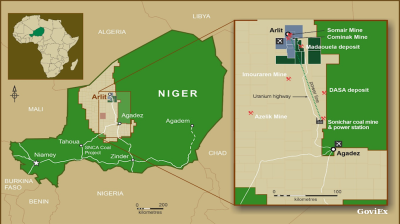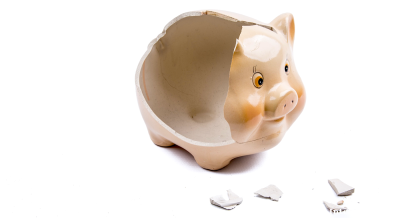A contract between Russia and Ukraine covering the transshipment of gas to Eastern Europe is due to expire at the end of the year. EU members Hungary, Slovakia and Austria continue to rely on Russian gas, but while they worry over future supply, the European Commission says that their fears are misplaced.
What? Russian gas shipments through Ukraine will stop in January 2025
Why? Ukraine has no plan to extend the contract beyond its current expiry date
What Next? EC says new sources of supply are available and Eastern EU members have no reason to rely further on Russia
European Commissioner Kadri Simson said this week that the European Union is ready for the gas transit agreement between Ukraine’s Naftogaz and Russia’s Gazprom to expire at the end of this year.
Speaking during a press conference for the Energy Council in Luxembourg on 15 October, Simson said: “We knew that this contract would expire…The Commission has been working closely with the most impacted member states to prepare for a zero-transit scenario as of 1 January 2025.
“Central and Southeastern Europe has diversified supply options to fully replace the 14bn cubic metres of Russian gas that is still transiting Ukraine,” she added.
The EU has indeed made headway over the last two years to reduce its once very important reliance on Russian pipeline gas. Gazprom once provided as much as 35-40% of Europe’s gas requirements. That share is now down to around 8%. Russian LNG still arrives at EU energy ports, but the big pipelines such as the Baltic subsea Nord Stream, which has been severely damaged, and the Yamal-Europe pipeline are no longer used. The key means of getting Russian gas to Eastern European EU members is via Ukraine, despite the fact that Russia upped its military adventure in Ukraine to a full-scale invasion in February 2022.
The Russian invasion of Ukraine prompted the EU to impose numerous sanctions against Moscow and wean itself off Russian gas, although those member states that were overly dependent on Russian gas were given time to line up alternatives. But now the EC believes that the bloc is prepared to address a winter without Russian gas.
Simson said EU members have entered the EU “heating season” on a relatively solid footing, saying that gas storage facilities are already at 95% capacity and more “injections into storage” are continuing. Storage is the EU’s insurance against supply disruptions and helps keep prices stable, she said, adding that renewables are constantly rising and that gas supplies have been diversified. She pointed out that new and existing LNG terminals have sufficient capacity and that transport infrastructure exists. There are various alternative supply routes for both LNG and pipeline imports, she said.
No excuses
“I have said this before and will say it again: there are no excuses; the EU can live without this Russian gas,” Simson told journalists, according to a transcript of the press conference. “If member states prefer to continue importing Russian gas, and they do it even beyond contracted capacity, or if they wish to sign new agreements for new capacities, I want to be clear: this is not a necessity. It is a political choice, and a dangerous one.
“We must remember that the costs of dealing with Russia are not just measured in the price of gas, but also in the lives lost in Ukraine,” she added. Without going too deeply into the differences that the Commission has with some EU members over Russian supplies, Simson noted that over the past two years, the EC has done all it can to enable member states to improve their security of supply outlook.
“Even in the absence of a full sanctions regime on Russian gas and LNG, we now have the tools for a gradual, full phase-out of Russian imports,” Simson said.
Economic or political?
Eastern European countries have known since 2006 and 2009 that it is risky to count on Moscow for uninterrupted gas supplies. For its part, Austria is looking to escape the supply contract between its OMV and Gazprom, even though the country is pretty much tied into an agreement that will run until 2040. Austria relies on Russia for some 98% of its gas imports and the fact that its Central European Gas Hub (CEGH) in Baumgarten can distribute gas throughout Europe has made gas deliveries to Austria very important to Russia.
Austria’s efforts to end its agreement with Russia will be complicated by legal and political challenges, but it is clear that Vienna is looking to take the same route as other EU members and move away from Russian gas, but how that will happen has yet to be worked out.
While Gazprom revenues have taken a severe hit from the fall in business with Europe, the route through Ukraine still provides Moscow with several billions of dollars that it uses to finance the war in Ukraine. And while Ukraine also earns money from the pipeline contract, it wants to end its business with Russia. Kyiv did not cancel the contract at the start of the war and kept the pipeline open in order to enable gas supplies to its nearby neighbours, Slovakia, Hungary and other EU members, in keeping with its obligations to the EU under its association agreement.
During a recent meeting between Ukrainian Prime Minister Denys Shmyhal and Slovakia’s Prime Minister Robert Fico, who wants to continue receiving Russian gas, the two men discussed the probability that Kyiv would continue to see that Slovakia is supplied with gas. Slovakia has not been among the best supporters for Ukraine during the war, but Kyiv has recognised Bratislava’s “acute dependence” on Russia.
Slovakia has criticised the EU for its sanctions on Russia and points to loop holes in the paperwork that enable other EU members to continue their business with Moscow. Fico opposes Ukraine’s eventual membership of NATO, but has said that he will not oppose Kyiv’s membership in the EU.
Hungary and TurkStream
Not so with Hungary and its extremely conservative leader Viktor Orban, who has gone so far as to block EU funding for Ukraine. Although the EU provided Hungary with sufficient time to line up new sources of gas supply, Orban has not pursued that end and has instead boosted his relations with Moscow, visiting the Russian capital in early July this year to meet with Russia President Vladimir Putin for the purported purpose of discussing a peace plan for Ukraine.
Orban has opposed the EU stance on Russia, arguing that it is basically bad business. He has claimed that the EU has lost economic growth by disconnecting from Russian energy and that it has had to allocate significant funds for energy subsidies and infrastructure to import LNG.
Hungary in September 2021 signed a 15-year gas supply agreement with Gazprom for 4.5 bcm annually. The agreement includes 3.5 bcm delivered through Hungary's interconnector with Serbia and 1 bcm via the pipeline extending from Austria.
Unlike Vienna, Orban does not appear eager to end his relationship with Moscow. It was announced on 15 October that Budapest has signed a new gas deal with Gazprom that will enable Hungary to fully utilise Russia’s TurkStream gas pipeline that runs under the Black Sea from southern Russia to the European side of Turkey, and from where it extends to Bulgaria.
Hungarian Foreign Minister Peter Szijjarto said this week that the agreement enables Hungary to increase gas volumes purchased under its existing trade contracts, thus providing greater flexibility in its energy supply, according to RIA Novosti. He said another deal was concluded that secures more gas deliveries for the final quarter of 2024. He said the additional deal would be provided at a competitive price, highlighting the focus on affordability and stability in Hungary’s energy procurement strategy.
For those looking to continue to receive Russian gas, TurkStream does seem to be the answer once the interconnectors are in place and there is sufficient capacity. Conceived of years ago by Putin when the EU put a halt to his SouthStream project to Bulgaria, TurkStream consists of two parallel pipelines, each with a 15.75 bcm per year capacity. One line supplies Turkey’s domestic market and the other runs to the Bulgaria border with the intention of supplying European customers.
Turkey has been keen to see the project through because it would like to establish itself as a regional gas hub in order to maintain its place inside the concept of the Southern Gas Corridor (SGC). Turkish President Recep Tayyip Erdogan has also maintained close ties with Putin, even though his country is a member of NATO. Turkey itself produces very little gas and requires imports of some 50 bcm annually. It imports gas from Russia, Azerbaijan and Iran and has several LNG terminals.
The plan, which Russia supports, is for Turkey to set up a gas market exchange, mix the gas that it imports (most of which will be Russian) and re-export it to European countries through TurkStream. How that plan transpires remains to be seen.
News

GoviEx, Niger extend arbitration pause on Madaouela uranium project valued at $376mn
Madaouela is among the world’s largest uranium resources, with measured and indicated resources of 100mn pounds of U₃O₈ and a post-tax net present value of $376mn at a uranium price of $80 per pound.

Brazil’s Supreme Court jails Bolsonaro for 27 years over coup plot
Brazil’s Supreme Court has sentenced former president Jair Bolsonaro to 27 years and three months in prison after convicting him of attempting to overturn the result of the country’s 2022 election.

Iran cleric says disputed islands belong to Tehran, not UAE
Iran's Friday prayer leader reaffirms claim to disputed UAE islands whilst warning against Hezbollah disarmament as threat to Islamic world security.

Kremlin puts Russia-Ukraine ceasefire talks on hold
\Negotiation channels between Russia and Ukraine remain formally open but the Kremlin has put talks on hold, as prospects for renewed diplomatic engagement appear remote. Presidential spokesman Dmitry Peskov said on September 12, Vedomosti reports.


